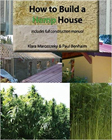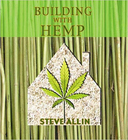Light-weight Concrete
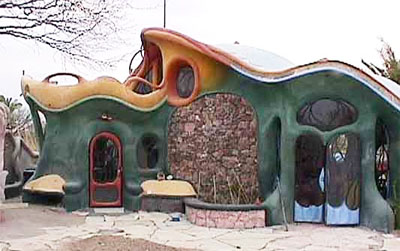 Lightweight concrete, weighing from 35 to 115 pound per
cubic foot, has been used in the United States for more than 50 years.
The compressive strength is not as great as ordinary concrete, but it
weathers just as well. Among its advantages are less need for structural
steel reinforcement, smaller foundation requirements, better fire resistance
and most importantly, the fact that it can serve as an insulation material!
It can cost more that sand and gravel concrete, and it may shrink more
upon drying.
Lightweight concrete, weighing from 35 to 115 pound per
cubic foot, has been used in the United States for more than 50 years.
The compressive strength is not as great as ordinary concrete, but it
weathers just as well. Among its advantages are less need for structural
steel reinforcement, smaller foundation requirements, better fire resistance
and most importantly, the fact that it can serve as an insulation material!
It can cost more that sand and gravel concrete, and it may shrink more
upon drying.
Lightweight concrete may be made by using lightweight aggregates, or by the use of foaming agents, such as aluminum powder, which generates gas while the concrete is still plastic. Natural lightweight aggregates include pumice, scoria, volcanic cinders, tuff, and diatomite. Lightweight aggregate can also be produced by heating clay, shale, slate, diatomaceous shale, perlite, obsidian, and vermiculite. Industrial cinders and blast-furnace slag that has been specially cooled can also be used.
Pumice and scoria are the most widely used of the natural lightweight aggregates. They are porous, froth-like volcanic glass which come in various colors and are found in the Western United States. Concrete made with pumice and scoria aggregate weighs from 90 to 100 pounds per cubic foot.
The rock from which perlite is manufactured has a structure resembling tiny pearls and when it is heated it expands and breaks into small expanded particles the size of sand. Concrete made with expanded perlite weighs between 50 to 80 pounds per cubic foot and is a very good insulating material.
Vermiculite comes from biotite and other micas. It is found in California, Colorado, Montana, and North and South Carolina. When heated, vermiculite expands and becomes a fluffy mass, which may be 30 times the size of the material before heating! It is a very good insulating material and is used extensively for that purpose. Concrete made with expanded vermiculite aggregate weighs from 35 to 75 pounds per cubic foot.
Concrete made with expanded shale and clay is about as strong as ordinary concrete, but its insulation value is about four times better. Pumice, scoria, and some expanded slags produce a concrete of intermediate strength, but with even more impressive value as insulation. Perlite, vermiculite, and diatomite produce a concrete of very low strength, but with superior insulation properties; however these are subject to greater shrinkage. All of these kinds of lightweight concretes can be sawn to some extent, and they will hold fasteners, especially screws.
Lightweight aggregate should be wetted 24 hours before use. It is generally necessary to mix lightweight concrete for longer periods than conventional concrete to assure proper mixing and it should be cured by covering it with damp sand or by using a soaker hose.
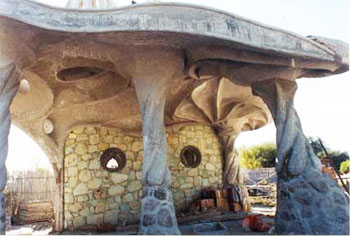 The master sculptor/builder who created the images
in this section is Steve Kornher, who is now living in Mexico. His website, Flying
Concrete, describes more about these pictures, and has many
more of these amazingly beautiful designs to be seen. Steve can be reached
through his website for consultation. He used an unvitrified aggregate,
kind of like perlite, but not manufactured; perhaps called tuff. It
comes well graded, fine to 1 1/2", with a few rocks which are tossed
out. He screens it a bit when doing shells and adds the coarser stuff
when doing walls. Walls are mixed 8 espumilla/ one cement / 1/2 lime.
Structural roofs are 5/1/ 1/2 -- 2-3" of this, then 3" or more of 8/1.
Then 1/8" sand and cement on top, scratched, the same day so he can
easily bond the next coat--polish coat or add more lt. wt. roof fill
between vaults 10 / 1 / 1/2. Local blocks made out of the stuff are
10/1 vibrated. A dry, fluffy mix weighs about 75 pounds per cu. ft.
He figures that 4" = 2" styrofoam, but he isn't sure.
The master sculptor/builder who created the images
in this section is Steve Kornher, who is now living in Mexico. His website, Flying
Concrete, describes more about these pictures, and has many
more of these amazingly beautiful designs to be seen. Steve can be reached
through his website for consultation. He used an unvitrified aggregate,
kind of like perlite, but not manufactured; perhaps called tuff. It
comes well graded, fine to 1 1/2", with a few rocks which are tossed
out. He screens it a bit when doing shells and adds the coarser stuff
when doing walls. Walls are mixed 8 espumilla/ one cement / 1/2 lime.
Structural roofs are 5/1/ 1/2 -- 2-3" of this, then 3" or more of 8/1.
Then 1/8" sand and cement on top, scratched, the same day so he can
easily bond the next coat--polish coat or add more lt. wt. roof fill
between vaults 10 / 1 / 1/2. Local blocks made out of the stuff are
10/1 vibrated. A dry, fluffy mix weighs about 75 pounds per cu. ft.
He figures that 4" = 2" styrofoam, but he isn't sure.
Pumicecrete
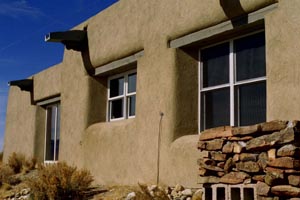 Pumicecrete has been used in constructing buildings for many years.
It is simply concrete that uses crushed volcanic rock as an aggregate
rather than conventional sand and gravel. Both pumice and scoria, when
used in this fashion, render a product that is much lighter than concrete.
It also transforms what is usually considered a thermal mass material
into something that is much more of an insulator (about R-1.5 per inch),
because of all the trapped air. This is very useful, because it makes
it possible to actually build a load-bearing structure with an insulating
material, as with earthbags filledwith the same crushed volcanic rock.
Pumicecrete has been used in constructing buildings for many years.
It is simply concrete that uses crushed volcanic rock as an aggregate
rather than conventional sand and gravel. Both pumice and scoria, when
used in this fashion, render a product that is much lighter than concrete.
It also transforms what is usually considered a thermal mass material
into something that is much more of an insulator (about R-1.5 per inch),
because of all the trapped air. This is very useful, because it makes
it possible to actually build a load-bearing structure with an insulating
material, as with earthbags filledwith the same crushed volcanic rock.
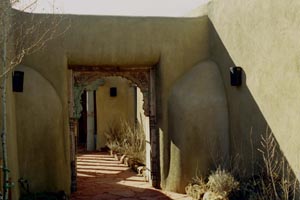 When mixing pumicecrete, the idea is to use just enough wet cement
to coat the aggregate so it will adhere to the surrounding particles.
Too much cement will defeat the purpose of maintaining all of that trapped
air; about three bags of portland cement per cubic yard of aggregate is
recommended. Once the material has set up a bit, the surface can be washed
to expose the natural color of the stone. The rough texture of pumicecrete
is ideal for adhering to further plasters that might be used.
When mixing pumicecrete, the idea is to use just enough wet cement
to coat the aggregate so it will adhere to the surrounding particles.
Too much cement will defeat the purpose of maintaining all of that trapped
air; about three bags of portland cement per cubic yard of aggregate is
recommended. Once the material has set up a bit, the surface can be washed
to expose the natural color of the stone. The rough texture of pumicecrete
is ideal for adhering to further plasters that might be used.
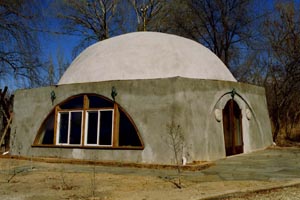 Pumicecrete is best placed on an ordinary concrete foundation, and
most applications require a cement bond beam at the top of the wall, for
structural strength and to tie the roof structure to. Entire domes of
pumicecrete have been successfully constructed. A wall thickness of at
least 14 inches is advised, with thicker walls providing more stability
and insulation.
Pumicecrete is best placed on an ordinary concrete foundation, and
most applications require a cement bond beam at the top of the wall, for
structural strength and to tie the roof structure to. Entire domes of
pumicecrete have been successfully constructed. A wall thickness of at
least 14 inches is advised, with thicker walls providing more stability
and insulation.
Cellular Light-weight Concrete
Extensive research has been undertaken in the use of industrial waste consisting of fly ash from power plants as a raw material for manufacturing building materials. The large volume of waste has became one of the most significant problems of environmental protection, as its disposal is expensive and non-productive. Experiments show that this waste material can be used for the production of high quality bricks, blocks and other building elements which are less energy intensive than their conventional counterparts. This research has yielded patented technology for the production of concrete-like blocks based on oil-shale and coal fly-ash, cured under normal atmospheric conditions.
A particularly interesting material that has been developed is ash-based cellular concrete, which in addition to being based on industrial waste, is also manufactured through a low-energy process. The manufacture of conventional cellular concrete of comparable properties requires very high energy input.
This material has been used in over 40 countries over the past 25 years to build residential and commercial buildings. It is an air-cured lightweight concrete that can be produced at the project site, using standard concrete equipment and molds. A typical mix for making blocks is:
Portland Cement..........190 kg
Sand............................430 kg
Fly Ash........................309 kg
Water..........................250 kg
plus a foaming agent
Here is a PDF file that explains more about this: CLC Brochure
For further information you might contact G. B. Singh at systembuildingATyahooDOTcom
cellularconcretetechnologies.com explains how structural lightweight concrete is made and used.
www.youtube.com video about making Aircrete
Perlite and Vermiculite Concrete
This type of lightweight concrete has a long history of industrial and construction uses; it can be highly insulating, and is especially useful where its light weight is an advantage, such as on roof structures. The following link, provided by the Shundler Company (a manufacturer of perlite and vermiculite) provides a wealth of information about this: schundler.com .
Hempcrete
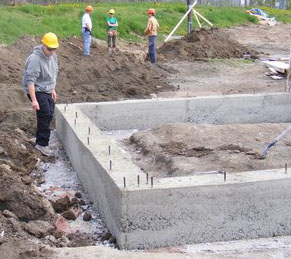 Hempcrete is a mixture of chopped hemp, hydrated lime and a small amount of either Portland cement or quick-set gysum, and possibly includes sand or pozzolans. A reaction between the lime and the hemp results in a very lightweight material that still has reasonable compressive strength. The advantage of hempcrete over regular cement is that the hempcrete is both structural and insulative, so both ends are achieved in the same pour. It is also lower in embodied energy. The disadvantages are a longer set time (2-4 weeks) and lower strengths. It is easier to work than traditional lime mixes and acts as a moisture regulator. It lacks the strength and brittleness of cement and consequently does not need expansion joints . It is less dense than concrete and is marketed under names like Hemcrete, Canobiote, Canosmose, and Isochanvre. Where the high ultimate strength of concrete is not necessary, this option works well.
Hempcrete is a mixture of chopped hemp, hydrated lime and a small amount of either Portland cement or quick-set gysum, and possibly includes sand or pozzolans. A reaction between the lime and the hemp results in a very lightweight material that still has reasonable compressive strength. The advantage of hempcrete over regular cement is that the hempcrete is both structural and insulative, so both ends are achieved in the same pour. It is also lower in embodied energy. The disadvantages are a longer set time (2-4 weeks) and lower strengths. It is easier to work than traditional lime mixes and acts as a moisture regulator. It lacks the strength and brittleness of cement and consequently does not need expansion joints . It is less dense than concrete and is marketed under names like Hemcrete, Canobiote, Canosmose, and Isochanvre. Where the high ultimate strength of concrete is not necessary, this option works well.
www.gizmag.com is an excellent article about building a hempcrete home in Asheville, NC, describing the attributes of this very sustainable material.
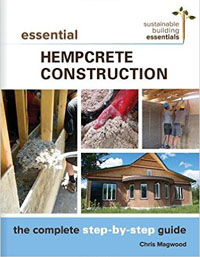 Essential Hempcrete Construction by Chris Magwood has combined his deep understanding of building science with some fortuitous hands-on experience of working with hempcrete to craft this timely and detailed guide. By simply mixing the lightweight core of hemp stalks (an agricultural byproduct) with lime it is possible to make an insulating material that can handle moisture without decomposing, has good structural qualities and thermal performance, is nontoxic and fire resistant, naturally sequesters carbon, and is ultimately completely recyclable. With the successful use of hempcrete in Europe for over a decade, hopefully this book will help usher in a new era of industrial hemp production in North America.
Essential Hempcrete Construction by Chris Magwood has combined his deep understanding of building science with some fortuitous hands-on experience of working with hempcrete to craft this timely and detailed guide. By simply mixing the lightweight core of hemp stalks (an agricultural byproduct) with lime it is possible to make an insulating material that can handle moisture without decomposing, has good structural qualities and thermal performance, is nontoxic and fire resistant, naturally sequesters carbon, and is ultimately completely recyclable. With the successful use of hempcrete in Europe for over a decade, hopefully this book will help usher in a new era of industrial hemp production in North America.
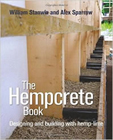 The Hempcrete Book Designing and Building with Hemp-Lime
The Hempcrete Book Designing and Building with Hemp-Lime
by William Stanwix and Alex Sparrow
UIT Cambridge Ltd, 2014
Informative Links
alliedfoamtech information about foamed concrete.
silbrico information about perlite concrete.
litebuilt.com information about this proprietary foaming technology.
ricehuskash details about the use of rice husk ash to make light-weight concrete.
enstyro.com manufactures a shredder to recycle styrofoam into a concrete addative.
Plans
Casa Del Sol
Touson Saryon, Architect
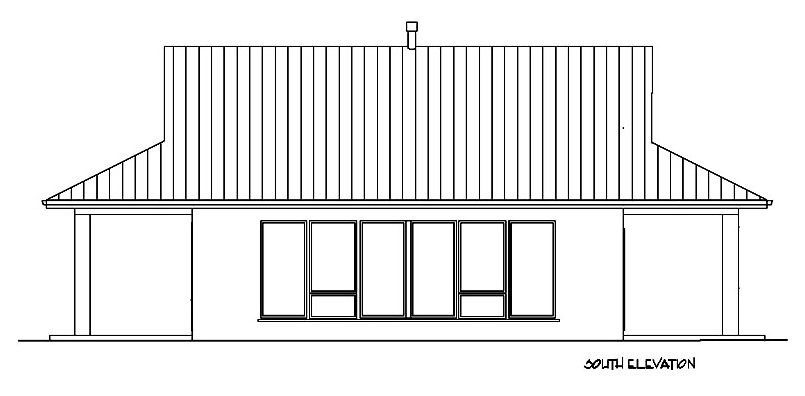
This 1233 sf passive solar home features large East and West covered porches for easy indoor/outdoor living. With 2 bedrooms, two baths and a large open living area, this home is perfect for a small family or a couple with frequent guests.
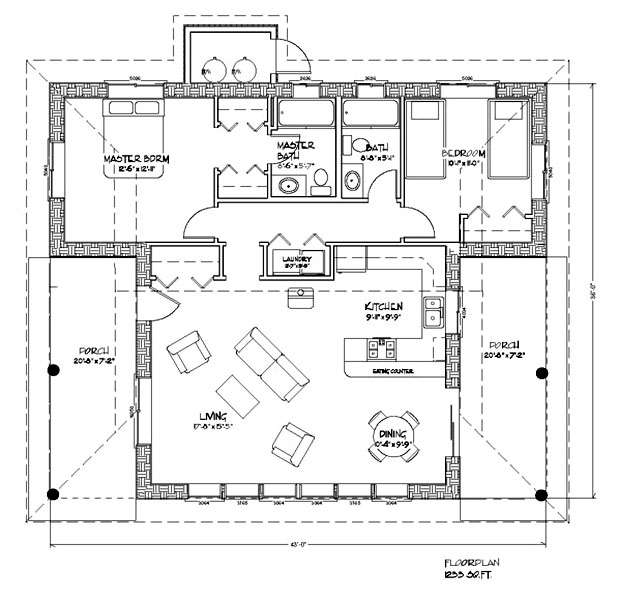
For more information about this plan, and many others, visit our sister site www.dreamgreenhomes.com, where you will find a wide range of plans for sustainable homes, greenhouses, small buildings, garages, and food storage space for sale. Dream Green Homes is a consortium of outstanding architects and designers, who have pooled their talent and expertise for your benefit.

For Email contact go to About Us
Established in 2001, GreenHomeBuilding.com is primarily a labor of love. Kelly, and the GreenHomeBuilding team of experts, have answered thousands of questions for readers over the years, and we continue to publish up-to-date information about increasingly important sustainable architecture. If you feel moved to assist us in this work, your kind donation would be much appreciated; this can be easily done through our PayPal account:

VISIT OUR OTHER WEBSITES:
[Natural Building Blog] [Earthbag Building] [Dream Green Homes]
Disclaimer Of Liability And Warranty
I specifically disclaim any warranty, either expressed or implied, concerning the information on these pages. Neither I nor any of the advisor/consultants associated with this site will have liability for loss, damage, or injury, resulting from the use of any information found on this, or any other page at this site. Kelly Hart, Hartworks LLC.




